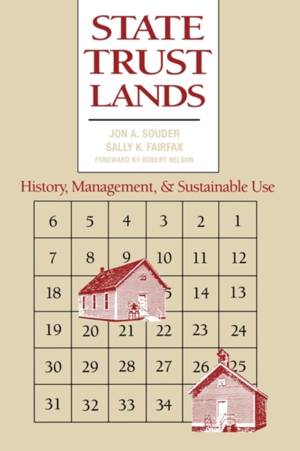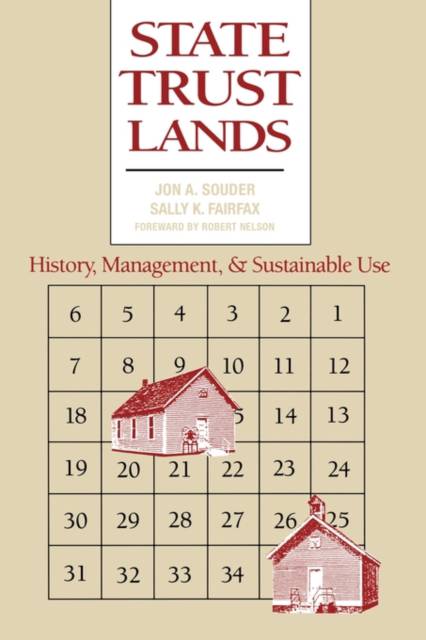
Je cadeautjes zeker op tijd in huis hebben voor de feestdagen? Kom langs in onze winkels en vind het perfecte geschenk!
- Afhalen na 1 uur in een winkel met voorraad
- Gratis thuislevering in België vanaf € 30
- Ruim aanbod met 7 miljoen producten
Je cadeautjes zeker op tijd in huis hebben voor de feestdagen? Kom langs in onze winkels en vind het perfecte geschenk!
- Afhalen na 1 uur in een winkel met voorraad
- Gratis thuislevering in België vanaf € 30
- Ruim aanbod met 7 miljoen producten
Zoeken
€ 64,45
+ 128 punten
Omschrijving
Before the federal constitution was written, the Confederate Congress established a policy providing land grants for local and state governments to support public schools. Since 1802, when Ohio joined the Union, every new state has benefited from that policy. Yet today, despite the fact that states still hold 132 million acres in trust, very little is known about the management and use of these lands. Compiling information from the twenty-two states that still own such trust lands, the authors provide a rare look at public land management from a state rather than federal government perspective. Although much has been written on federal management, this is the first comprehensive look at the local administration of state trust lands--which cover far more acreage than lands overseen by the National Park Service and nearly as much as those supervised by the U.S. Forest Service. Understanding and analyzing the state trust lands has always been difficult because they consist of twenty-two state programs and 200 years of history. In State Trust Lands, Jon A. Souder and Sally K. Fairfax examine the management programs instituted by each state, exploring them as models for public land administration. They investigate the nature and role of public resources; observe how states regulate grazing lands and mineral leases; provide insight into subsidizations and self-sustaining land uses; illustrate how state and federal policies differ; and evaluate the strength and weaknesses of market-based approaches to public resource management. State trust lands, they contend, tend to be managed more conservatively and with more environmental awareness than federal lands. This book provides an array of tested, viable alternatives to Bureau of Land Management and U.S. Forest Service management models and will be invaluable to anyone interested in the financial, use, and environmental planning of public resources. Exploring the diverse set of experiences of state land trust managers, Souder and Fairfax present successful and less successful management practices and offer new models and data for the debate on the future of public lands.
Specificaties
Betrokkenen
- Auteur(s):
- Uitgeverij:
Inhoud
- Aantal bladzijden:
- 384
- Taal:
- Engels
- Reeks:
Eigenschappen
- Productcode (EAN):
- 9780700609390
- Verschijningsdatum:
- 21/02/1996
- Uitvoering:
- Paperback
- Formaat:
- Trade paperback (VS)
- Afmetingen:
- 155 mm x 232 mm
- Gewicht:
- 512 g

Alleen bij Standaard Boekhandel
+ 128 punten op je klantenkaart van Standaard Boekhandel
Beoordelingen
We publiceren alleen reviews die voldoen aan de voorwaarden voor reviews. Bekijk onze voorwaarden voor reviews.









